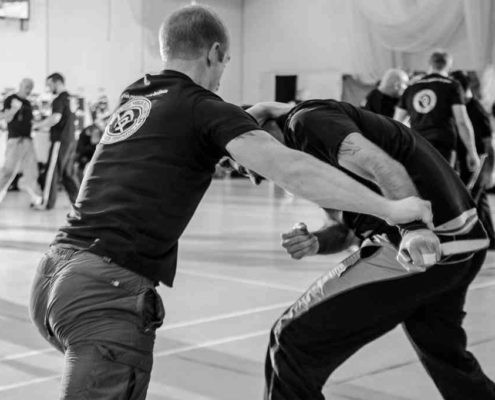Choosing the Right Krav Maga Training Program

Training in Krav Maga at Bristol Titans
Krav Maga is a highly effective self-defense system designed for real-world applications. Selecting the right Krav Maga training program is crucial to developing the skills you need to defend yourself effectively. With so many options available, it can be challenging to decide which program best suits your needs. In this article, we’ll guide you through key factors to consider when choosing a Krav Maga training program that aligns with your personal goals and requirements.
1. Location of the Training Facility
When selecting a Krav Maga training program, location is a significant factor to consider. A conveniently located facility increases the likelihood of consistent attendance, which is key to success in any martial arts program. Commuting long distances can be time-consuming and could lead to irregular participation, impacting your overall progress.
Key Considerations for Location:
- Proximity to home or workplace
- Availability of parking and safe access
- Cleanliness and maintenance of the training environment
2. Instructor’s Experience and Qualifications
The experience of the instructor is one of the most important factors when choosing a Krav Maga training program. A qualified instructor with real-world experience ensures you’re learning practical techniques that can be applied effectively in self-defense situations.
What to Look for in an Instructor:
- Proven teaching experience and real-world self-defense background (e.g., law enforcement, military, or combat sports such as MMA, Muay Thai)
- Certifications from reputable organizations like the International Krav Maga Federation (IKMF), Krav Maga Worldwide (KMW), or the British Krav Maga Association (BKMA)
- A minimum of 8 years of Krav Maga experience and a strong martial arts background
3. Class Size and Structure
Class size plays a vital role in the quality of instruction. Smaller class sizes often allow for more individualized attention, enabling instructors to provide personalized feedback. In contrast, larger classes may be better suited for those focused on fitness rather than personal defense training.
Pros and Cons of Class Sizes:
- Small Classes: More personalized attention, direct feedback from instructors
- Large Classes: Increased energy, may focus more on fitness than technique
Choose a class size that aligns with your personal goals, whether you’re looking to improve self-defense skills or general fitness.
4. Training Styles and Program Focus
Krav Maga programs can vary significantly in their training styles. Some emphasize traditional martial arts, while others focus more on real-world self-defense and situational awareness. Depending on your objectives, it’s essential to find a training program that aligns with your specific goals.
Program Styles:
- Traditional Martial Arts Focus: Emphasizes techniques and forms
- Real-World Defense Focus: Prioritizes practical applications and street defense
- Fitness-Oriented Programs: Integrates physical conditioning with Krav Maga training
5. Importance of Sparring in Krav Maga
Sparring is an essential part of Krav Maga training, offering a dynamic environment to apply and refine your skills. It helps you develop timing, reflexes, and situational awareness in a safe yet realistic setting. Sparring is key to preparing mentally and physically for real-world confrontations.
6. Trial Classes and Assessing the Program
Many Krav Maga training programs offer trial classes to give potential students a firsthand experience of the training environment. This is an excellent opportunity to assess the instructor’s teaching style, class atmosphere, and program structure before committing long-term.
What to Evaluate in a Trial Class:
- Instructor’s teaching methods
- Class dynamics and community atmosphere
- How the program aligns with your self-defense and fitness goals
7. Community and Training Environment
The community within a Krav Maga program can significantly impact your experience. A supportive and welcoming environment fosters growth and encourages continued participation. Look for programs that promote inclusivity and have a community that motivates and challenges you.
Benefits of a Positive Community:
- Encouragement and support from fellow trainees
- A sense of belonging, making training more enjoyable and sustainable
Conclusion
Choosing the right Krav Maga training program is essential for reaching your personal goals, whether they include self-defense skills, fitness, or both. By considering factors such as location, instructor experience, class size, training style, and community, you can find a program that suits your needs. Don’t forget to take advantage of trial classes to ensure the program is the perfect fit for you.
